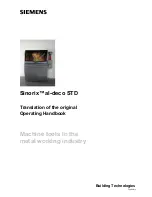
Oil tool before each use. 4 to 5 drops of a good grade Air Tool Oil placed in the air inlet
is sufficient. Use proper air pressure and CFM rating listed for this tool.
Drain water from hoses and compressor tank. Water in the air supply line will cause
gumming and loss of power. Clean the air filter on the supply line and flush the tool with
gum solvent or a 50/50 mix of air tool oil and kerosene. It may be necessary to
disassemble the tool to properly clean and re-lubricate.
LUBRICATION & MAINTENANCE
Motor
Oil
Trans.
Fluid
Brake
Fluid
Water
Whip
hose
Air Tool
Oil
Yes
No
1. Do not put additional pressure on the machine. This will only slow down the speed of
the pad, reduce sanding efficiency and shorten the tool's life. We recommend the air
pressure of this grinder at 90 PSI.
2. Start the sander off the work, set it down on the work evenly and move it slowly back
and forth in wide, overlapping areas. When finished sanding, lift it off the work before
stopping motor.
3. Start the work with an abrasive grit just course enough to remove high spots and
roughness. Follow with additional sanding, using finer grits, until the desired finish is
obtained. Never go from a coarse grit to a fine grit in one step.
4. Lubricate the air motor with a good grade of air tool oil and drain the tank daily. Grit or
gum deposits in the tool may cut power and may be corrected by cleaning the air
strainer and flushing out the tool with gum solvent oil.
OPERATION
4
ASSEMBLY / INSTALLATION
1. You will need to prepare the 1/4 in. Quick-disconnect Coupler Plug to connect to the air
inlet on the sander. Wrap the Coupler Plug with pipe thread seal tape before threading it
into the Air Inlet. Connect the a Quick-Disconnect coupler on a 3/8 in. ID Air Source
Hose to the tool.
NOTE:
If you are not using an automatic oiler system, before operation, add a few drops of
Pneumatic Tool Oil to the airline connection. Add a few drops more after each hour of
continual use.
2. Set the air pressure on your compressor to 90 PSI. Do not exceed the recommended air
pressure of 90 PSI.
3. Check the air connection for leaks. Once you are satisfied there are no leaks, turn off
the air compressor and disconnect the tool.
Clean air of correct air pressure is recommended for the power supply for this tool. A
maximum of 90 PSI at the tool is recommended for most air tools of this class. Check
specifications section for recommended pressure. (Depending on length of air hose and
other circumstances, air pressure at compressor may need to be increased to 100 PSI to
ensure 90 PSI at the tool.)
Water in the air hose and compressor tank contributes to reduced performance and
damage of the air tool. Drain the air tank and filters before each use and as necessary to
keep the air supply dry.
Hose length over 25 ft. causes loss in line pressure. Increase hose I.D. or increase
compressor pressure to compensate for the pressure loss. Use an in-line pressure
regulator with gauge if air inlet pressure is critical.
AIR SOURCE
5






















